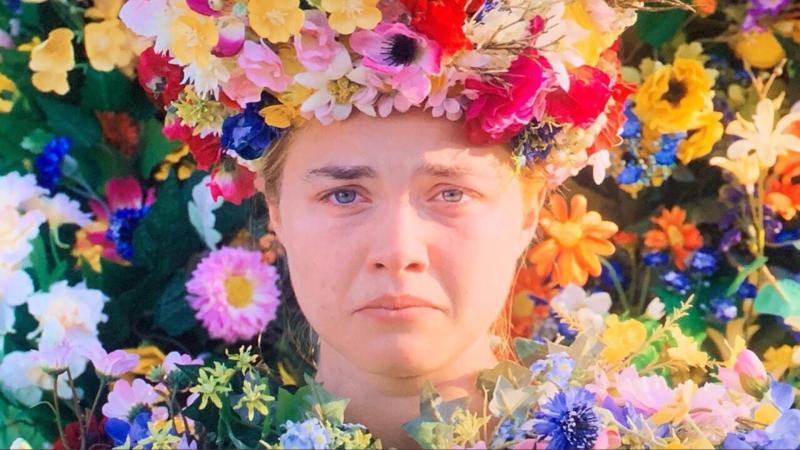Major spoilers ahead.
In writer and director Ari Aster’s second horror film “Midsommar,” the main character Dani, after the death of her sister and parents, travels to Sweden with a group of friends to celebrate the Midsummer festival with a pagan cult. Unbeknownst to the group, the cult requires nine sacrifices for the nine days of the festival, four of which are outsiders that members of the cult bring every year. These outsiders turn out to be the four friends that accompany Dani.
“Midsommar” starts with Dani in near complete emotional isolation. In the first scene, Dani attempts to contact her sister Terri due to an ominous email Terri has sent her (“i cant anymore – everything’s black – mom and dad are coming too. goodbye”). Terri unsurprisingly doesn’t pick up, and Dani is left to scroll through her recent calls. In a close-up shot of her phone, we see a list of people Dani had recently called (including her boyfriend Christian), none of whom had answered her. She then goes on to call Christian again, only to have him seem disinterested in her turmoil, even letting out a sigh of exasperation as he tells her that she “lets” her bipolar sister “get to her.”
After a scene where Dani calls an unnamed friend about her emotional dependence on Christian, Aster reveals the suicide of Terri (along with the murder of her parents) through one last phone call. As Christian picks up the phone (to his friend Mark’s great disbelief: “She’s literally abusing you!”), Dani wails on the other end of the line, “No no no no no.” This dramatic turn of events leads Christian, seemingly on the brink of breaking up with Dani, to awkwardly hold a wailing Dani on the sofa.
Throughout the movie, we see Dani’s emotional and psychological state progressively “worsen” as she starts to become accustomed to the cult of Hårga’s traditions. This ambivalence is initially seen in the first ritual the cult performs. When the elders jumped off the cliff, while most of the group reacted in complete horror (most evident in the couple Simon and Connie), Dani’s initial shock fades into what seems like acceptance, as a close-up shot shows her face void of expression. As more and more rituals are performed throughout the nine days (and more and more drugs are unknowingly consumed by the main characters), Dani’s emotional turmoil seems to become more and more pronounced. In one last shattering scene, where Dani sees Christian having sex with Maja, a member of the cult, she completely breaks down.
In the last montage of the movie, as the sacrifices are being burned in the triangular house, Dani stands in the front of a screaming and wailing crowd; her initial expression of horror gradually turns into a triumphant smile. This last scene can be interpreted in two ways: one, as Dani having completely lost her mind (smiling while her boyfriend is being burned alive), or Dani’s realization that she has finally found a community that helps her carry her emotional burden — her Swedish friend who remembered her birthday, the women who wailed with her after her nervous breakdown. Personally, I don’t think that either of these interpretations necessarily excludes the other. Rather, the ambivalence between both sheds more light on the situation: Dani believes that she has found a family, even though this family is rather psychotic by usual standards.
The pagan cult in “Midsommar” depends on many rituals that emphasize community, shared emotions and especially the shared ritual of grief. It is a community that sees life and nature as cyclical (the sacrificed bringing new births), of individuals being a part of something bigger than themselves. Breathing plays an important role in differentiating between Dani’s previous relationships and that of hers within the cult. Before her encounter with the cult, Christian sighs when Dani attempts to be emotionally vulnerable to him. However, breathing seems to play a performative and ritualistic role in the cult, one that is meant to connect and empathize rather than dismiss. After Dani sees Christian’s cheating, the group of women with her collectively wail, their breathing becoming synchronized and the scene becoming a commutative ritual of grief. When viewed from the perspective of a ritualistic grieving, Dani’s grief isn’t necessarily diminished, but she is allowed to publicly express her grief, something that she struggles with Christian in the first scenes of the movie.
Whilst respecting the cultural differences in processes of grief, “Midsommar” toes the line between the dangers of brainwashing and the triumph of an emotionally isolated woman. In his signature ultimate ambiguity, previously seen in “Hereditary,” Aster ultimately leaves the task of interpretation to the audience.
Contact Emma K Wang at ekwang ‘at’ stanford.edu.
